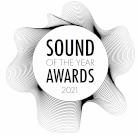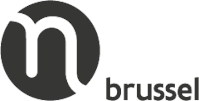Zijlijn / Linea Lateralis
In our North Sea, under water, sight is limited, often just a few meters. At most it is about 30 meters. Sound however travels much much further under water. And for this reason it is central to a lot of the marine life, for communication, navigation, foraging and mating. A true sonic world, a language that is mysterious to us, and often beyond comprehension.
However, The North Sea is one of the busiest in the world, almost every inch of it knows some form of human occupation. And therefore the North Sea is also one of the loudest in the world, human sounds blanketing the whole sea floor. Noise from the countless ships, but also drilling, oilrigs, the construction of wind farms, fishing, and fish farms. At the moment researchers are trying to figure out what a normal baseline for background noise could be, and how it might affect wildlife. Some of the research is done with the aim of trying to regulate, and subdue, the human noise in our waters.
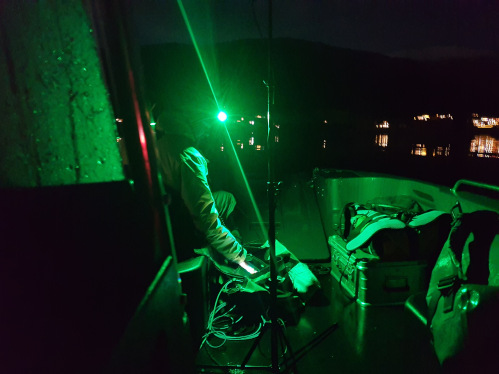
Hydrophone recording in Norway. Pic by Anders Bibow Olsen
The title of the installation, Zijlijn or Linea Lateralis, refers to the organ in certain fish that detects pressure variations in the water, and is connected to their hearing. This linea lateralis evolved from the same proto-organ that our own ears evolved from.
Zijlijn / Linea Lateralis uses a tailored made lateral spatialisation that is best heard in the space. As a teaser, the track below is an excerpt of a stereo rendition of the installation.
Zijlijn / Linea Lateralis was awarded an honourable mention by the Sound Of The Year Awards in its "Composed with Sound" category.
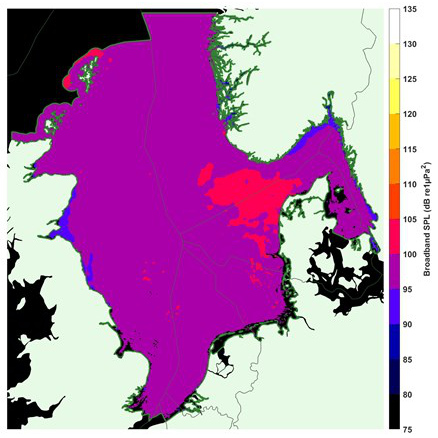
Average background sound levels from natural sources, of which wind is the major source, in 2019. The level of sound is relatively constant over the North Sea with a level of 100 dB. Noise map by the JOMOPANS project.
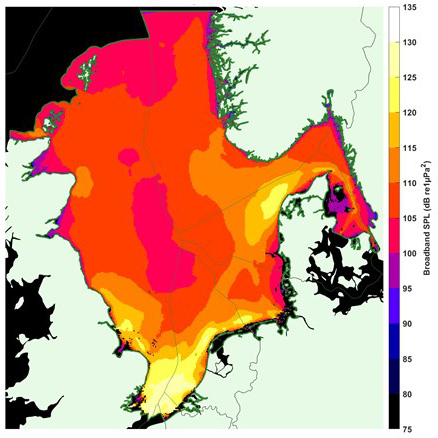
Average sound levels from both ship and natural sound in 2019. These levels range from 105 dB to 130 dB and are significantly higher than natural noise levels. Noise map by the JOMOPANS project.
Credits
Commissioned by Concertgebouw Bruges
Conceived, created & composed by Stijn Demeulenaere
- Production
- Co-Production
- In collaboration with
- Supported by
- Recordings by
- Recording assistants
- Noise maps courtesy of
- Video trailer by
- Kunstenwerkplaats
- Concertgebouw Brugge
- iMAL - Art Center for Digital Cultures & Technology
- STUK - House for Dance, Image and Sound
- Lydgalleriet Bergen
- ZSenne ArtLab
- The Flemish Community
- The Flemish Community Commission of the Brussels Capital Region
- Stijn Demeulenaere
- Anders Bibow Olsen
- Kjetil Høidal
- Ioana Mandrescu
- Kevin Trappeniers
- Julien Ortuno
- JOMOPANS
- Daniel Demoustier
With the help of Kevin Trappeniers, Ioana Mandrescu, Anders Bibow Olsen, Kjetil Høidal, Julien Ortuno, Jan Haelters, Popi Gkikopoulou, Wim Pauwels, Karlien Vanhoonacker, Lieve Demin, Charlotte De Somviele, Eva Welkenhuyzen, Jan De Moor, Jeroen Vanacker, Ana Ascencio, Gilles Helsen, Julie Lillien Porter, Nikki Sheth, Stéfan Piat, Leander Schönweger, Johan Vandermaelen, Jana Winderen, Philip Janssens, Daniel Demoustier, Marie du Chastel, Kristoff Demeulenaere, Luc Emiel Rooman, Rosa Auber-kraft, Lewi Moors, the Royal Belgian Institute of Natural Sciences, Jan Seys, the Flanders Marine Institute, the Sea Mammal Research Unit of the Scottish Ocean Institute, Niels Kinneging, JOMOPANS, Marta Picciulin, Antonio Petrizzo, Michol Ghezzo, SOUNDSCAPE, SATURN, Ohme, the Notam Spatial Audio Salon, and the crews at Kunstenwerkplaats VZW, Concertgebouw Brugge, iMAL, STUK, Lydgalleriet Bergen and ZSenne ArtLab. My sincere gratitude to all of you.
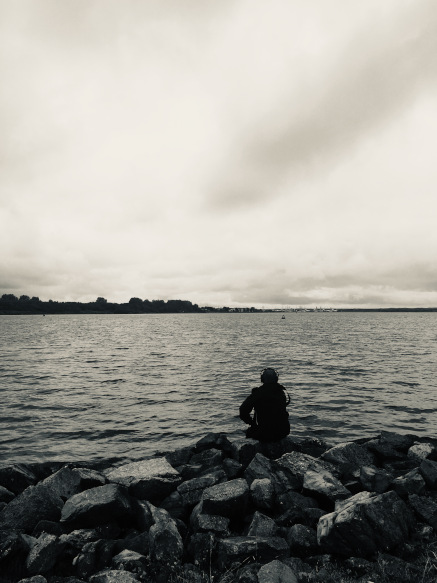 Hydrophone recording in Grevelingen, pic by Kevin Trappeniers
Hydrophone recording in Grevelingen, pic by Kevin Trappeniers
